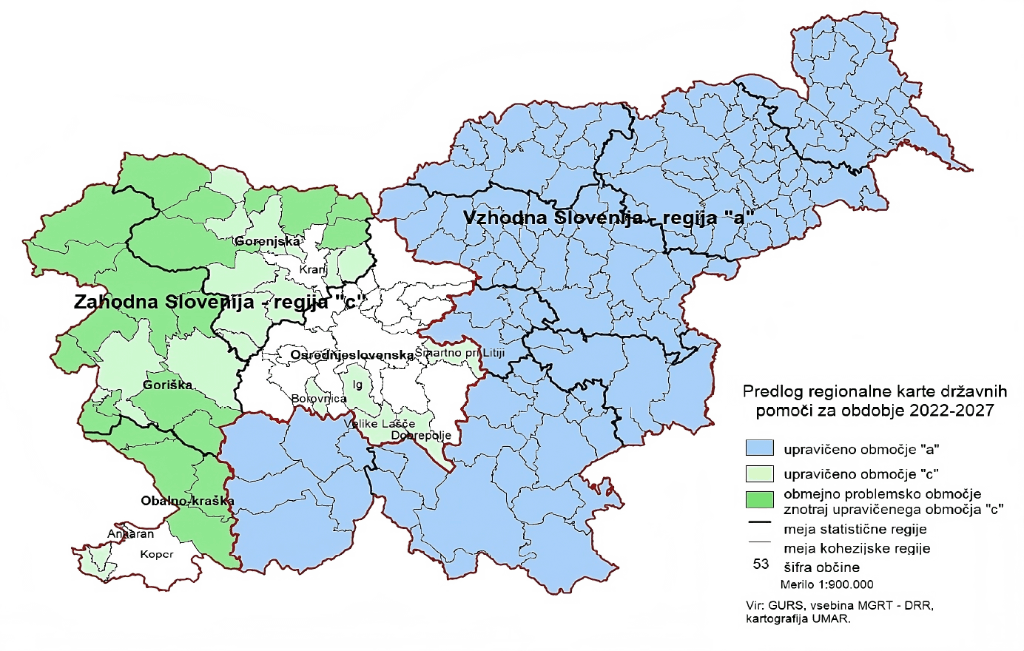Cohesion regions represent geographical segments established with the aim of promoting more balanced development within individual countries and the entire European Union. In Slovenia, there are two such regions: Eastern and Western Slovenia.
Since 2016, Western Slovenia is considered among the more developed European regions, while Eastern Slovenia remains in the category of less developed ones. For this reason, calls for the allocation of non-repayable grants often favor projects implemented in Eastern Slovenia, as there is a greater need for developmental aid there.
In addition to cohesion regions, there are also border problem areas which face developmental lag due to various factors. Among them are poor transport accessibility, dispersed settlements, challenges in maintaining and developing infrastructure, and stricter environmental standards. These areas also often receive special attention when allocating funds to stimulate their development.
In the allocation of non-repayable funds, specific criteria are used, which are defined in Annex I of the GBER Regulation and consider the regional aid map. These criteria include the size of the company and economic conditions in individual regions.

On the Regional Aid Map, there are areas where the economic situation is particularly poor (type “a”), as is the case, for example, in Eastern Slovenia, and areas where the conditions are less critical but still unfavorable (type “c”), as in Western Slovenia.